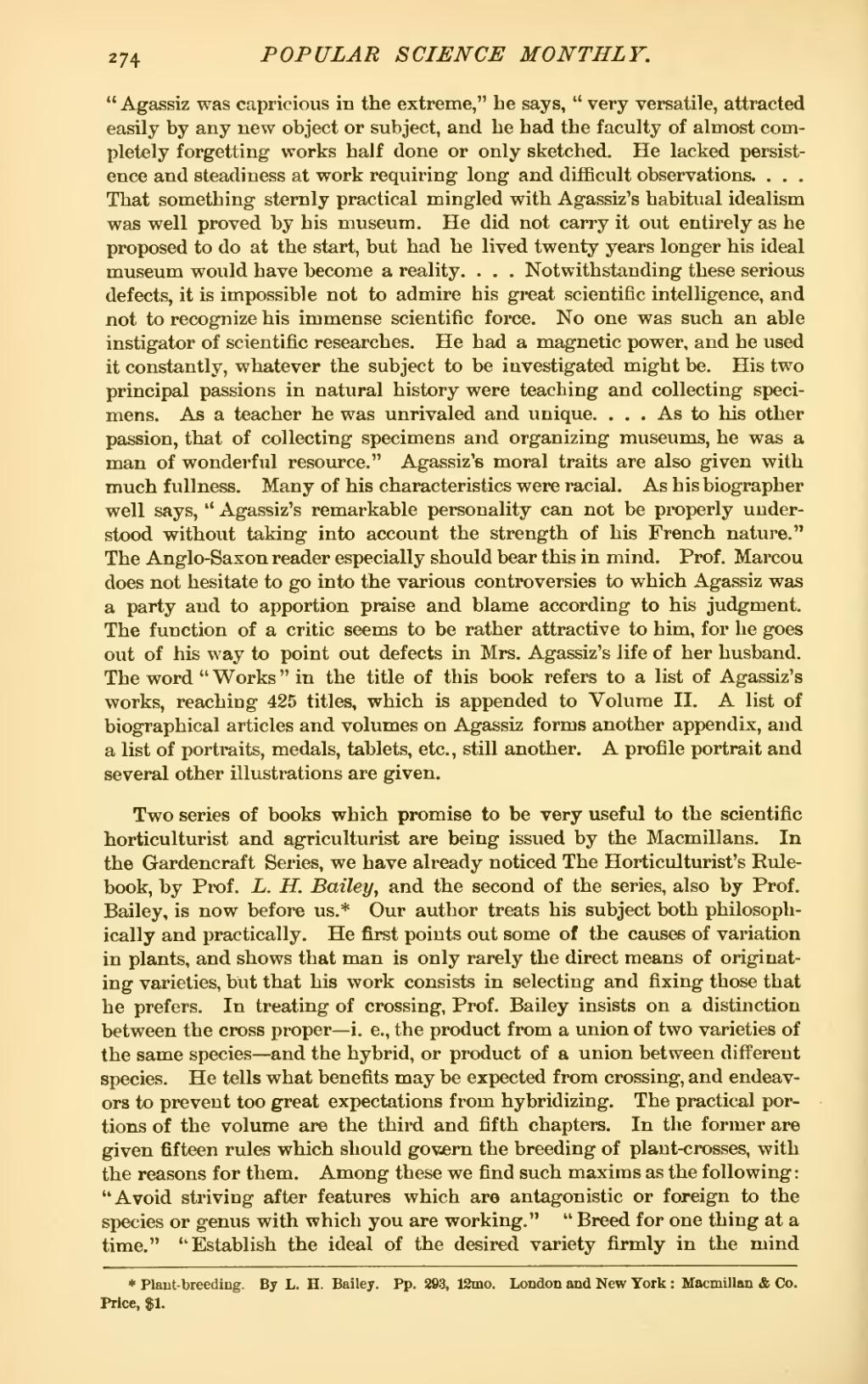"Agassiz was capricious in the extreme," he says, "very versatile, attracted easily by any new object or subject, and he had the faculty of almost completely forgetting works half done or only sketched. He lacked persistence and steadiness at work requiring long and difficult observations. . . . That something sternly practical mingled with Agassiz's habitual idealism was well proved by his museum. He did not carry it out entirely as he proposed to do at the start, but had he lived twenty years longer his ideal museum would have become a reality. . . . Notwithstanding these serious defects, it is impossible not to admire his great scientific intelligence, and not to recognize his immense scientific force. No one was such an able instigator of scientific researches. He had a magnetic power, and he used it constantly, whatever the subject to be investigated might be. His two principal passions in natural history were teaching and collecting specimens. As a teacher he was unrivaled and unique. . . . As to his other passion, that of collecting specimens and organizing museums, he was a man of wonderful resource." Agassiz's moral traits are also given with much fullness. Many of his characteristics were racial. As his biographer well says, "Agassiz's remarkable personality can not be properly understood without taking into account the strength of his French nature." The Anglo-Saxon reader especially should bear this in mind. Prof. Marcou does not hesitate to go into the various controversies to which Agassiz was a party and to apportion praise and blame according to his judgment. The function of a critic seems to be rather attractive to him, for he goes out of his way to point out defects in Mrs. Agassiz's life of her husband. The word "Works" in the title of this book refers to a list of Agassiz's works, reaching 425 titles, which is appended to Volume II. A list of biographical articles and volumes on Agassiz forms another appendix, and a list of portraits, medals, tablets, etc., still another. A profile portrait and several other illustrations are given.
Two series of books which promise to be very useful to the scientific horticulturist and agriculturist are being issued by the Macmillans. In the Gardencraft Series, we have already noticed The Horticulturist's Rulebook, by Prof. L. H. Bailey, and the second of the series, also by Prof. Bailey, is now before us.[1] Our author treats his subject both philosophically and practically. He first points out some of the causes of variation in plants, and shows that man is only rarely the direct means of originating varieties, but that his work consists in selecting and fixing those that he prefers. In treating of crossing, Prof. Bailey insists on a distinction between the cross proper—i. e., the product from a union of two varieties of the same species—and the hybrid, or product of a union between different species. He tells what benefits may be expected from crossing, and endeavors to prevent too great expectations from hybridizing. The practical portions of the volume are the third and fifth chapters. In the former are given fifteen rules which should govern the breeding of plant-crosses, with the reasons for them. Among these we find such maxims as the following: "Avoid striving after features which are antagonistic or foreign to the species or genus with which you are working." "Breed for one thing at a time." "Establish the ideal of the desired variety firmly in the mind
- ↑ Plant-breeding. By L. H. Bailey. Pp. 293, 12mo. London and New York: Macmillan & Co. Price, $1.
